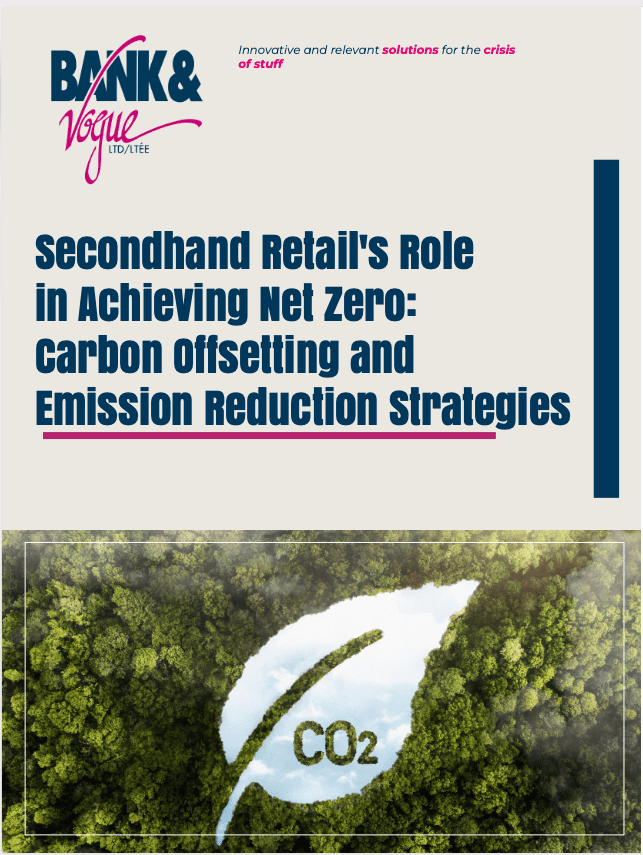Introduction
The fashion industry is a significant contributor to climate change, responsible for approximately 10% of annual global carbon emissions, surpassing the combined emissions of international aviation and maritime shipping. With the global secondhand clothing market projected to reach $350 billion by 2027, this sector is uniquely positioned to drive sustainability through reduced emissions, extended product lifecycles, and minimized waste. This white paper explores how secondhand wholesale and retail can contribute to net-zero targets and outlines actionable strategies, supported by real-world data.
The Carbon Challenge in Fashion
Key Facts:
- The production of a single new cotton T-shirt emits around 2.1 kg of CO₂ and consumes 2,700 liters of water.
- Textile waste in landfills generates methane, a greenhouse gas 25 times more potent than CO₂.
Secondhand retail disrupts this cycle by reducing the demand for new clothing production and diverting textiles from landfills. However, achieving carbon neutrality requires further efforts, such as sustainable logistics, transparent reporting, and investments in carbon reduction technologies.
The Role of Secondhand Retail in Carbon Reduction
Environmental Benefits:
- Extended Product Lifecycle: Reselling garments delays their entry into waste streams, cutting emissions from new production.
- Lower Carbon Footprints: A secondhand leather jacket purchase, for example, can save over 140 pounds of CO₂ and thousands of gallons of water.
- Reduction in Textile Waste: Diverting textiles from landfills prevents methane emissions while supporting circular economy principles.
Strategies for Achieving Net Zero
- Carbon Offsetting and Credits
- Partner with certified programs to offset unavoidable emissions through investments in renewable energy, reforestation, or community carbon projects.
- Example: The RealReal measures the environmental savings of consignment items, promoting accountability and informed consumer choices.
- Sustainable Logistics and Supply Chains
- Use energy-efficient transportation systems and consolidate shipments to minimize emissions.
- Collaborate with eco-conscious logistics providers to enhance sustainability across the supply chain.
- Circular Economy Integration
- Invest in services like repair, rental, and buy-back schemes, as pioneered by companies like Decathlon, to keep garments in use longer.
- Facility Efficiency
- Transition to renewable energy sources in warehouses and retail outlets.
- Install energy-efficient lighting and HVAC systems to lower operational emissions.
Best Practices for Secondhand Retailers
- Conduct Carbon Audits: Identify emission hotspots and develop targeted reduction plans.
- Foster Transparency: Use sustainability calculators to measure and share the environmental impact of operations.
- Partner Strategically: Work with green logistics providers and invest in scalable offset programs.
Bank & Vogue’s Commitment to Sustainability
Bank & Vogue, a global leader in the circular economy, exemplifies how secondhand businesses can drive carbon reduction. Specializing in wholesale used goods, we focus on maximizing the value hierarchy of textiles to divert them from landfills. Our operations are dedicated to creating a truly circular future for used clothing.
Conclusion
Secondhand retail is more than an eco-friendly choice; it is a powerful tool for driving global sustainability. By implementing carbon offsetting, optimizing supply chains, and fostering circular economy principles, the industry can achieve significant progress toward net-zero goals. These efforts not only mitigate climate impact but also enhance consumer trust and brand value, securing a resilient future for the sector.







